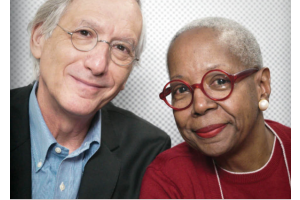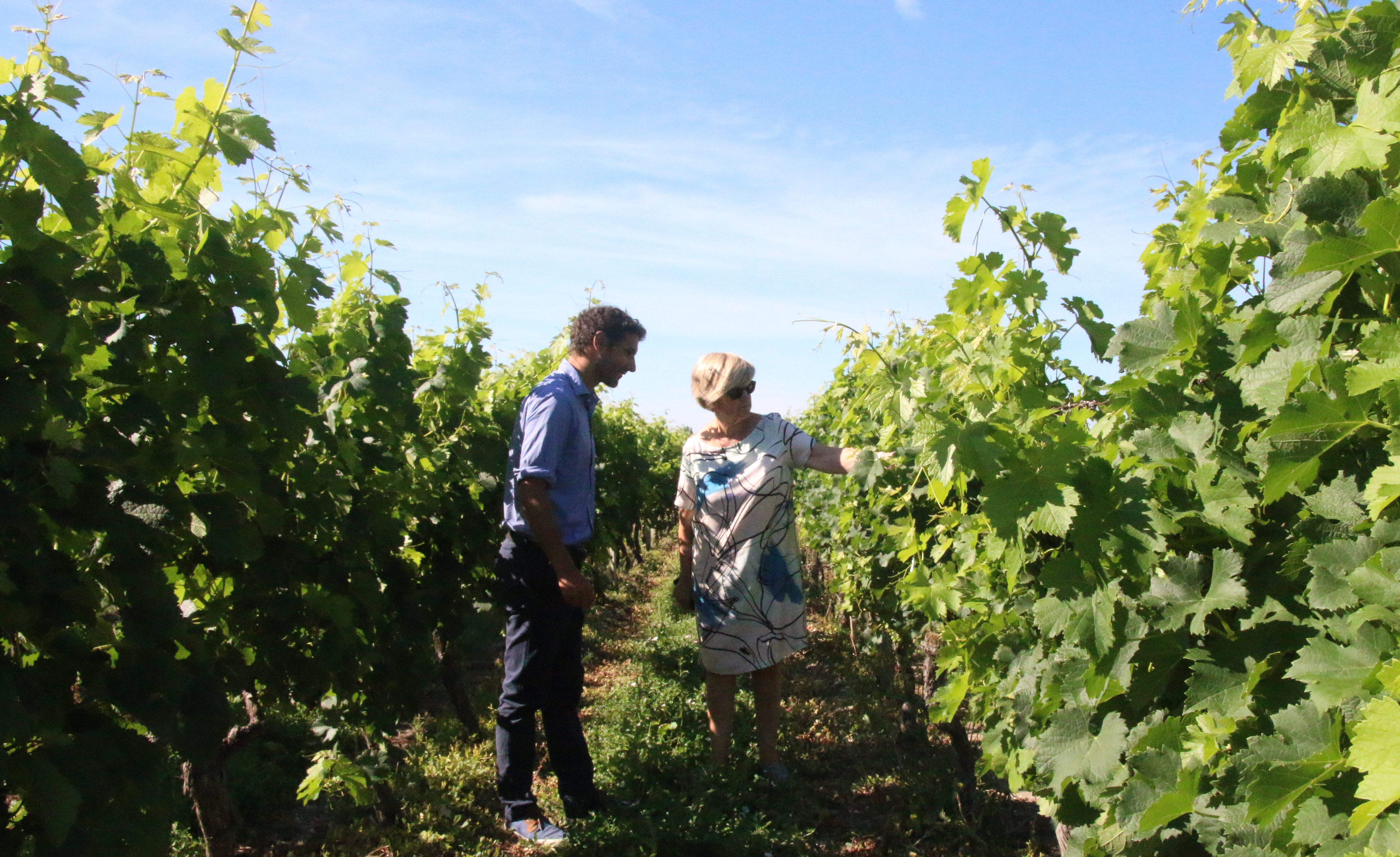
Blaye-Côtes de Bordeaux is a Bordeaux appellation on the right bank of the Gironde (opposite Pauillac), centered on the town of Blaye. The area is hillier than the Médoc, rising to a height of over 70m above sea level. The soil is mostly clay over limestone. Red wine is made predominantly from Merlot, Cabernet Sauvignon and Cabernet Franc, with small quantities of Malbec, Petit Verdot and Carménère.
As part of the Côtes de Bordeaux, Blaye vineyards are predominately on slopes. The region is known for quality wine at a value price.
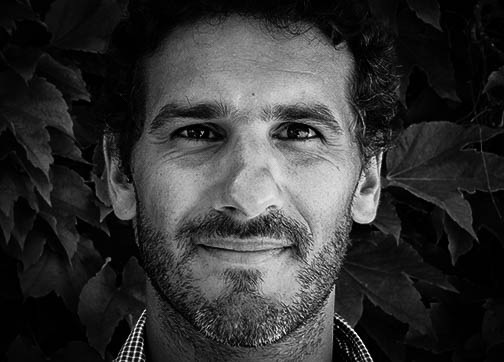 Grape Collective visits Château Magdeleine-Bouhou and talks with winemaker Yann Couturier (photo right). Bouhou or “Bouhar” in local language, means to blow, which was inspired by the strong winds which surround the Gironde estuary.
Grape Collective visits Château Magdeleine-Bouhou and talks with winemaker Yann Couturier (photo right). Bouhou or “Bouhar” in local language, means to blow, which was inspired by the strong winds which surround the Gironde estuary.
Christopher Barnes: What is Blaye-Côtes de Bordeaux?
Yann Couturier: Blaye-Côtes de Bordeaux is one of the Côtes de Bordeaux appellations. We have different appellations within the Côtes de Bordeaux, and in fact, côte means "slope." So it's one of our mutual characteristics, to have slopes all over the appellation.
And now that is a huge part of the Bordeaux region. The other characteristic is to find in this different appellation familiar properties. With a smaller sized estate you will find you can meet the wine grower.
So, I think that represents well the biggest part of the Bordeaux production. So familiar property, focus on quality. Where you can find white wine, red wine, and based on quality, and on this kind of appellation, it's where you can find now maybe the best good value from wine in Bordeaux.
Talk a little bit about the terroir at this estate, and in Blaye-Côtes de Bordeaux.
So, the terroir of the estate here is clay and limestone. With some parts that have a lot of limestone. So, that gives interesting characteristics to our wine.
And this terroir of clay and limestone is one of the three big terroirs of the Blaye appellation. So here around Blaye, and near to the estuary we have this kind of terroir.
If you go more north you will have more sand. So, the wine will be maybe more fruity, more easy going. And on the eastern part of the appellation we can find sand and gravel. Because we are still near to the estuary so you can find some gravel.
And these are the three big terroirs of the appellation. Each property can have a really specific terroir, and each wine grower will adapt production to his particular terroir to have the best fit between the terroir and the style of the wine.
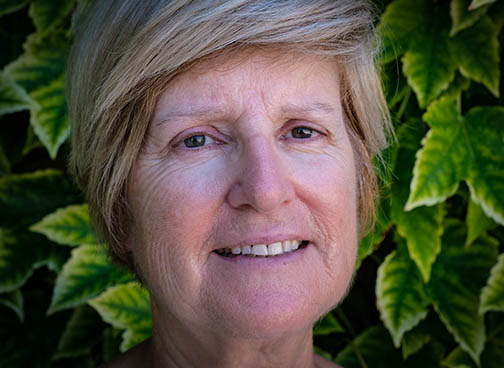 Talk a little bit about the history of the estate.
Talk a little bit about the history of the estate.
So the history of the estate Château Magdeleine-Bouhou started in the 17th century. The property was owned by two wine merchants in Bordeaux. In 1908 Mr. Chaumet bought the property. It's now stayed in the same family, and now Muriel Revaire (photo left) is the generation number four.
Talk a little bit about how winemaking has changed during this generation at the château.
The Château Magdeleine-Bouhou in Blaye was always known for the quality of production. For example, in 1930 they were one of the first estates in Bordeaux to put the wine in bottle. 1929 was an excellent year, and generation after generation they continue to work on quality.
In 2004 Muriel took over as the head of the property, and in 2010 she decided to be advised by Stéphane Derenoncourt, and all of Stéphane's team helped Muriel (Muriel Rousseau-Revaire is the owner) and all the team here in the château to increase the quality through the work that is done in the vineyard. To be more precise with the managing of the vineyard. With green harvest for example, the work of the soil, and all the important things such as the date of the harvest. And they continue to help the property in the cellar.
They bring an external look to the process here. So now we really work all together, and the quality really increases year, after year. Vintage after vintage.
Take a 360 degree virtual reality tour of the winery and the vineyards. This experience only works in certain browsers including Google Chrome. You can also experience the VR tour directly on Youtube.
And you're moving towards organics?
We are moving more and more towards the organic process. We stopped using chemical products in our soil. We plant cereal in winter, in order to bring green fertilizer to the vine. We use natural yeast for the vinification, for example. So more and more we are moving to organic processes.
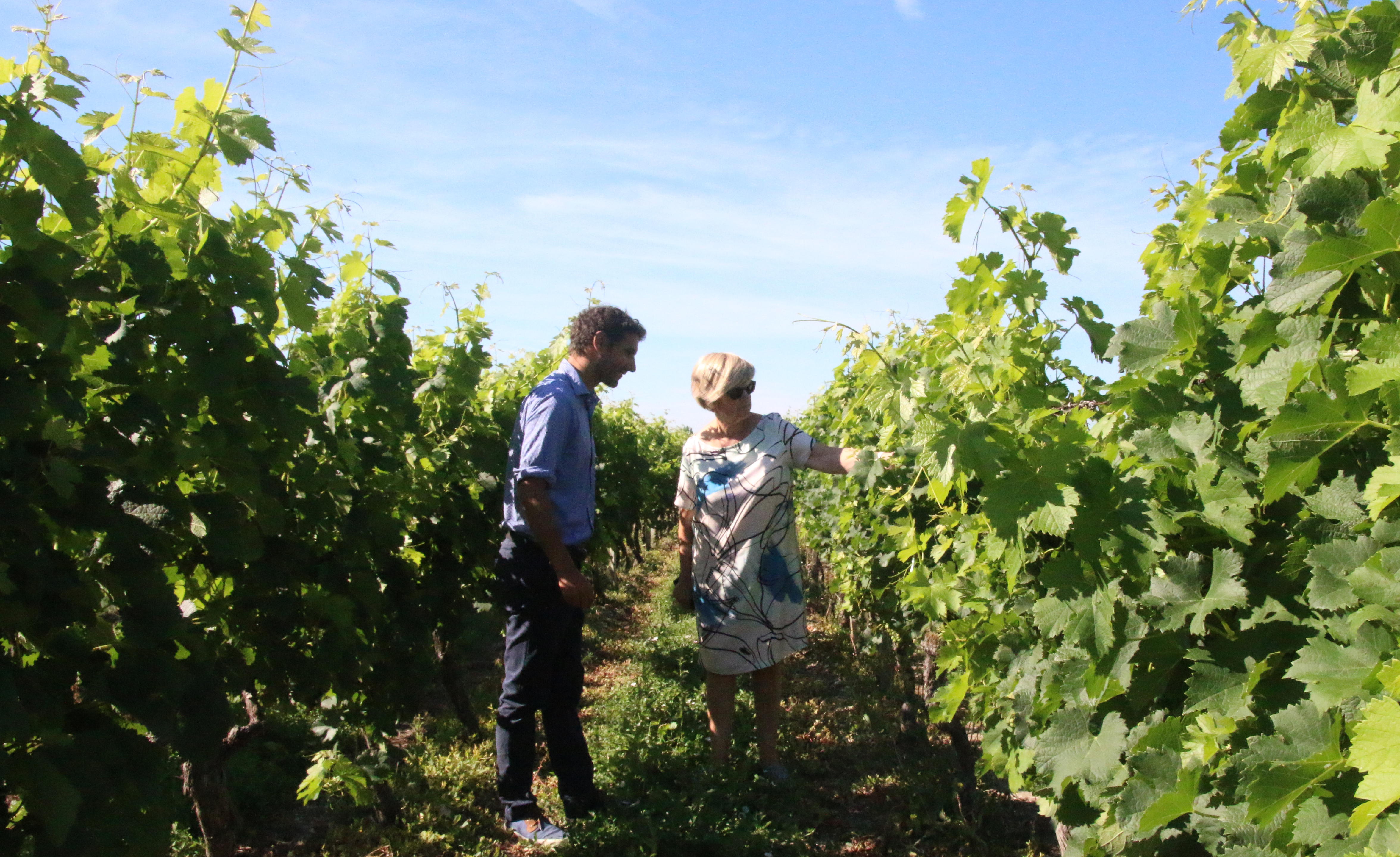
And you use concrete now in your winemaking. How long has that been going on?
In 2009 we rebuilt our cellar, and in 2012 we started to use new concrete vats. Small concrete vats in order to be more precise and to realize plot vinification.
So we have several sizes of vats, and that has allowed us to be really precise and to realize the best blend at the end. Because here the different plots have different characteristics. So, we can vinify plot by plot, and choose the best plot for our best wine.
For more information visit their website.
More on Bordeaux - check out our interview with Jean de Boigne of Château Pitray.





